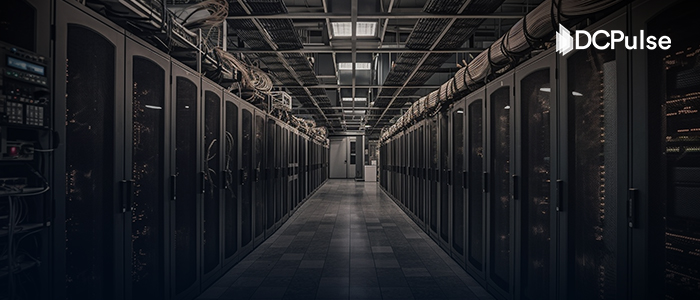The walls, floors, and foundations of Big Tech’s billion-dollar data centers all have one thing in common: they’re made from one of the world’s most carbon-intensive materials. Cement and concrete are responsible for more CO₂ emissions than every plane, train, and ship combined.
Yet in the race to decarbonize AI infrastructure, companies like AWS, Google, Meta, and Microsoft aren’t starting with servers or solar panels; they’re starting with the very concrete under our feet.
Cement’s Carbon Cost
Every time a hyperscale data center rises from the ground, it quietly locks in a large, invisible carbon debt. The main culprit is not the servers or cooling systems; it’s the concrete beneath them.
Cement, the binding agent in concrete, is responsible for roughly 7-8% of global CO₂ emissions according to the IEA. Most of that impact comes from the calcination process: heating limestone above 1,400 °C, which releases CO₂ both from fuel combustion and the chemical reaction itself.
In large infrastructure builds, data centers included, concrete can account for up to 70% of the embodied carbon, the emissions embedded in the materials before the facility even turns on a single server.
A single mid-scale facility can require more than 11,000 metric tons of cement, and at the industry-average footprint of ~0.9 tons of CO₂ per ton of cement, that’s over 10,000 metric tons of CO₂ baked into the structure from day one.
The problem isn’t just size, it’s speed. With AI and cloud growth accelerating, analysts expect global data center floor space to increase by more than 300% by 2030. That means tens of millions of tons of cement will be poured in the next five years alone, locking in emissions for decades unless the material itself changes.
The irony is hard to miss: facilities built to drive the world’s digital and AI transformation are, at their foundations, contributing heavily to the very climate challenges AI might one day help solve.
The Scale: From Megawatts to Megatons
The data center industry’s growth over the past decade has been staggering, and its material footprint is expanding in tandem. According to Uptime Institute and CBRE forecasts, global data center floor space is expected to increase by more than 300% by 2030, driven largely by AI, cloud, and hyperscale computing demands.
This surge translates directly into massive demand for concrete. A single hyperscale data center can require approximately 25,000 cubic yards of concrete. This equates to roughly 11,340 metric tons of cement, based on a typical mix containing about 300 kg of cement per cubic meter.
Just considering the United States, the American Cement Association projects that data center construction will consume around 1 million metric tons of cement annually between 2025 and 2027, as the number of data centers grows from 5,426 in 2025 to over 6,000 by 2027.
Cement production emits about 0.9 metric tons of CO₂ per ton (IEA data), resulting in roughly 900,000 metric tons of CO₂ annually from U.S. data center cement use alone.
Globally, extrapolating from the U.S.’s approximate 40% share of data centers, this implies a global cement use of about 2.5 million metric tons annually in data center construction, resulting in around 2.25 million metric tons of CO₂ emissions per year.
To put this in perspective, cement production accounts for about 8% of global CO₂ emissions, or roughly 4.4 billion metric tons annually as of 2023 estimates.
While data center cement-related emissions represent a relatively small fraction of this total, around 0.02% globally, their rapid growth trajectory makes it a significant and growing source within the tech sector’s carbon footprint.
These figures underscore the urgent need to rethink material choices and construction methods if data centers are to align with global climate goals.
Regional Cement Emissions & Data Center Construction
Even within the same building design, the carbon footprint of the concrete used can vary significantly depending on regional cement production practices. While few publicly available studies focus exclusively on data centers, general cement industry data offers clear indicators.
In the United States, average emissions stand at roughly 0.78-0.89 tons of CO₂ per ton of cement, according to U.S. EPA data, depending on the plant’s efficiency and technology.
By contrast, global industry reports show that cement CO₂ intensity varies significantly across countries, with high-performing plants achieving intensities close to 0.6 ton of CO₂ per ton of cement.
Two identical hyperscale data centers in different regions, one using a high-efficiency cement plant (0.6 ton CO₂/ton cement) and one a typical U.S. plant (0.78-0.89-ton CO₂/ton cement), could have 30-40% different concrete-related carbon emissions just because of the cement source.
While specific data center case studies on this are limited, making more sustainable location choices, such as regions with low-carbon cement supply, or nearby plants using blended clinkers or co-processing fuels, can be a powerful lever to reduce infrastructure emissions, even before the building is designed.
The Materials That Could Change Everything
For decades, the cement used in data center construction has been chosen for cost, speed, and strength. Sustainability was an afterthought. That is now changing.
Big Tech is experimenting with alternative binders, recycled aggregates, and AI-optimized mix designs that cut the carbon cost of concrete without slowing down build times.
Meta’s work with Amrize is a sign of this shift. By using algorithms to adjust the cement, clinker ratio, water content, and curing time, the system finds the lowest-carbon mix that still meets strict structural and thermal-mass needs for server halls.
Early tests suggest this can cut embodied CO₂ from concrete by up to 40% compared to industry averages, depending on local materials and curing conditions.
Google has trailed low-clinker cement with supplementary materials such as fly ash and slag, while Microsoft is testing CarbonCure’s process, which injects captured CO₂ into the mix where it mineralizes and stays locked away.
These methods share a goal to reduce the most carbon-intensive part of cement production, the chemical reaction that turns limestone into clinker.
If adopted at scale, such materials could erase millions of tonnes of CO₂ from the tech sector’s construction footprint. But adoption is not only about technology. Local building codes, supply chain readiness, and contractor experience all shape whether these greener concretes become the default in hyperscale builds or remain niche experiments.
The industry now faces a choice: keep pouring the same carbon-heavy cement that will lock in millions of tons of emissions for decades or rewrite the recipe entirely.
Behind the scenes, companies like Microsoft, Meta, Google, and AWS are already testing mixes that promise to slash concrete’s carbon footprint by 30%, 50%, or even more, without slowing down construction.
In the next article in the series, we’ll step inside these trials, uncover the materials and methods reshaping the foundations of Big Tech’s AI infrastructure, and ask the question:
How low can data center concrete’s carbon really go?





